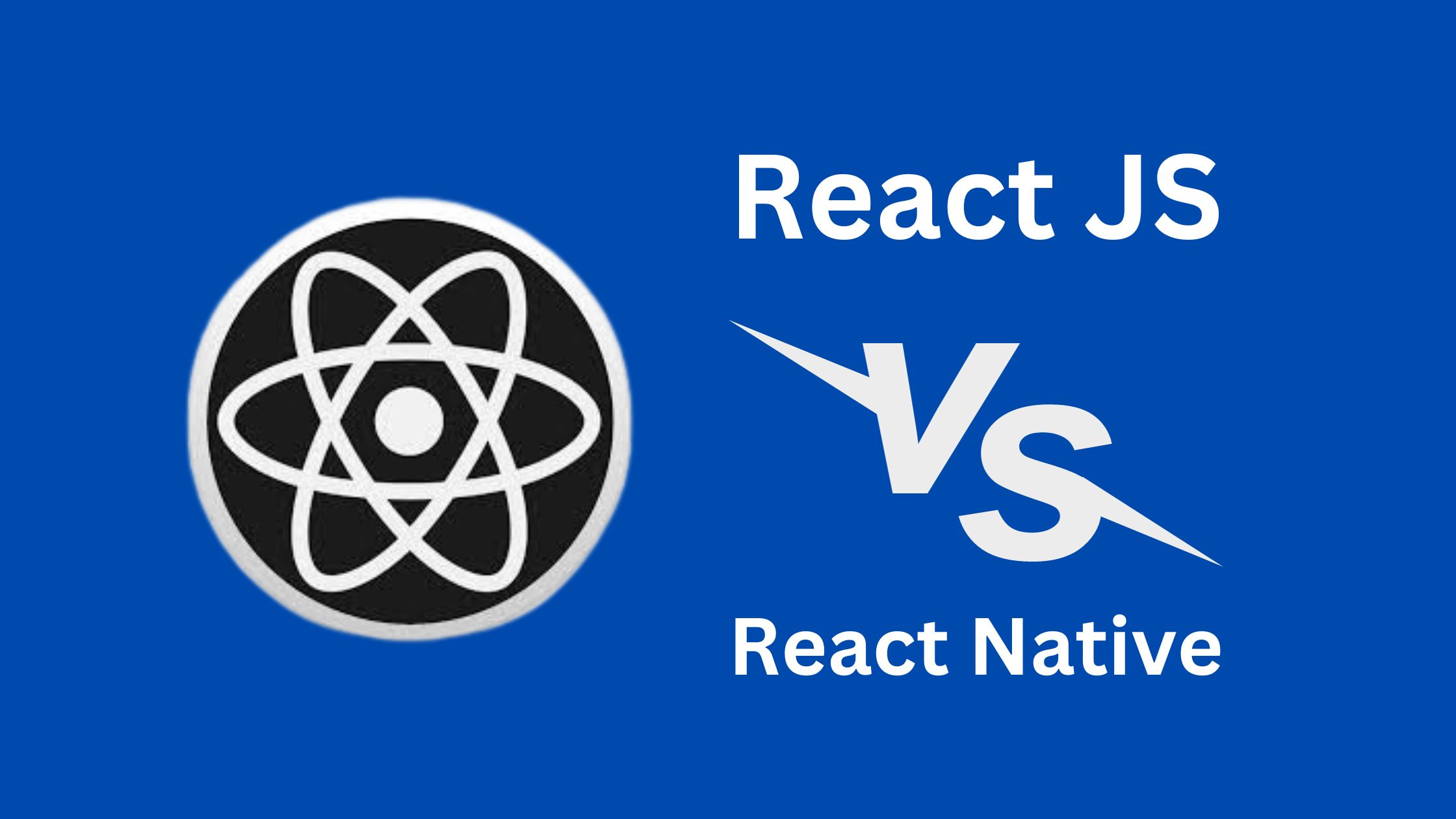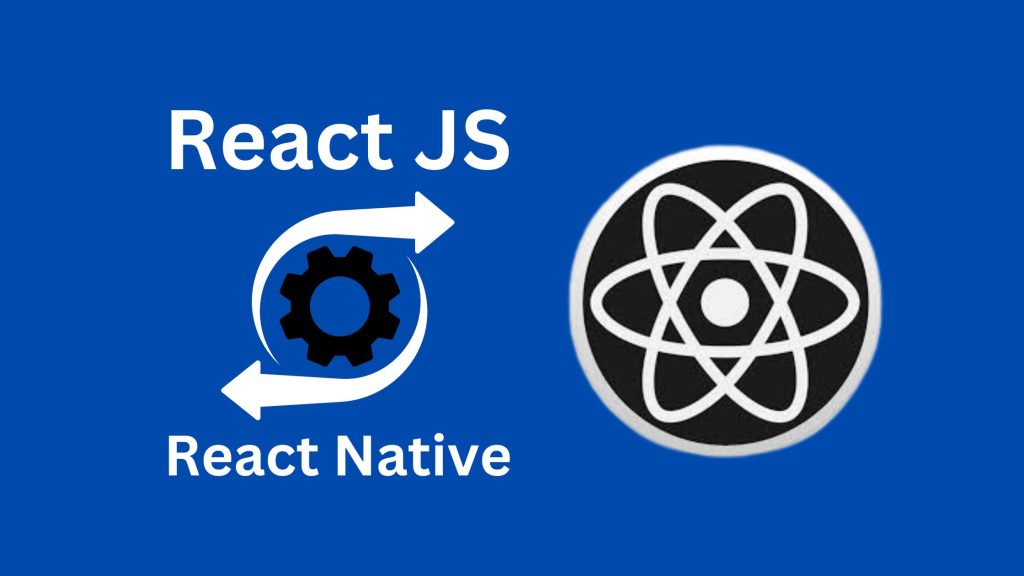In the field of technology, both libraries are essential for their respective using perspectives. A front-end developer can’t find rhythm in creating dynamic web pages without the support of React JS.
It takes the best care for the view layer of a web application and provides a developer enough freedom to build up a functional website with less code.
In react JS, everything is a component; components are applied to compose a complex user interface.
React Native also uses components, but it conforms to native components instead of web components. Rather than the browser, it focuses on the cross-platform mobile application.
It’s an open-source JavaScript platform that offers immense advantages to Android app developers as it supports the Android operating system.
However, if you want to know deeply about the difference, features, usability, facilities, and other aspects of React JS and React Native, you may spend a few minutes here. We’re going to breaking down everything to deliver you a great insight into the topic. Let’s dive into the context!
React JS vs. React Native, Which is Better?
The choice between React JS and React Native depends on your project requirements:
- If you are building a web application, React JS is the appropriate choice.
- If you are developing a mobile application for iOS and Android and want to share a significant portion of your codebase between the two platforms, React Native is a better choice.
What is React JS?
React is a JavaScript library used for building UI components. It’s component-based, open-source, and declarative. A front-end developer applies it to create painless interactive user interfaces.
The encapsulated components of React can manage their own state, render data, and update the overall functionality. For developing dynamic web pages, React JS knowledge is inevitable for web developers.
How different is React Native from React JS?
React Native is distinctive from React JS in terms of operation. Their application platforms are separate. The standout differences between React Native and React JS are highlighted below:
React JS:
- React JS is a JavaScript framework that is used for developing web applications
- A developer can execute React JS on all platforms
- It navigates pages through the React router
- It saves a lot of coding time using the code components
- It uses HTML tags and provides high security
- It uses CSS and other JavaScript libraries for animation
- The browser code is rendered by the virtual DOM
React Native:
- React Native is generally used for developing mobile applications
- It can’t be used on all platforms as it needs more effort to do so
- React Native features some built-in navigators to navigate the application
- It uses React Native UI components and modules to develop an application
- It comes with some built-in animation libraries
- It doesn’t use HTML tag and offers lower security
- It renders code applications through the API
Is React JS the same as React Native?
React JS and React Native both JavaScript frameworks are invented by Facebook. React JS was released in 2013 and React Native came to light in 2015.
They are originated from same programming language and abide by the same functionalities, but React JS is not the same as React Native. In general, React JS is used to create beautiful, dynamic, and high-performance single-page web applications.
It preliminary uses HTML elements for running into the browser. In order to handle all the related elements, it utilizes the JavaScript coding paradigm.
It builds a natural environment in the browser to severe a web application. No obstacle causes to page reloading, waiting time, delay throughput, and other aspects in developing a webpage through React JS. It’s simple, easy, and highly functional.
But as for React Native, it’s developed for use on mobile applications. It’s a cross-platform developing framework that works on IOS and Android operating systems.
React Native follows the JavaScript coding paradigm; it doesn’t provide much simplicity, security, and functionality in comparison to React JS. It uses JS style sheets and native animations to develop a mobile application.
Besides, it uses an asynchronous bridge to pass the data to the Native thread. In React Native, two threads including Native thread and JS thread are available.
Native thread typically draws layout on the screen with the actual value and the JS thread executes the React code. But React JS’s working approach is completely different from it. Hence, it can be said that React JS is not the same as React Native.
How similar React Native to React JS?
Despite having all differences, you will find some similarities between React JS and React Native. As both are the products of the JavaScript programming language, some of their characteristics seem relevant and the same.
Both the libraries tend to follow the same documentation system to ensure much comfort to the developers.
A developer has to come across the same console logs and network requests to perform operations in both React JS and React Native.
One of the standout similarities of both JavaScript libraries is the JSON format. Both the frameworks use JSON format to interchange data.
Is React Native a good choice?
In the field of mobile applications, nothing can beat the performance and compatibility of React Native. It’s undeniably a good choice for mobile application development.
To work well on the mobile platform, it provides cheap and fast track functionality. Its technical terms are highly effective and appealing. Some innovative features brought about a new revolution to the world of mobile applications.
The Android app developers find optimal ease in their app-building process through this outstanding framework.
With a seamless navigation facility and aesthetic working procedure, React Native has been the top choice to the developers to earn a high salary. Let’s have a look at the factors why it’s a good choice.
Cross-platform compatibility:
Most of the APIs of React Native is cross-platform. As a result, the developers can use it to build both iOS and Android applications.
The invention of React Native has lessened the use of some major programming languages such as Java, C++, Swift, and so on in developing mobile applications.
A JavaScript developer can build an authoritative application applying the native UI library, APIs, and JavaScript functionality. Most notably, React Native has reduced the cost of development as the native code can be written or embed at ease.
Native functionality:
The native functionality increases the popularity and usability of React Native to a great extent. A mobile application developer can easily develop a user interface using native widgets.
It provides many facilities to build complex and robust applications with less code. The keyboard behavior, animations, and accelerations offer significant advantages to have flawless performance.
With the combination of React Native and JavaScript functionality, a mobile application works smoothly and efficiently.
Live updates and open source:
React Native allows the developers to get live updates in the course of developing an application. A developer can check out the updates on the mobile phone instead of going through the application store update cycle.
The users get the latest update service automatically through the React Native environment. The open-source feature is one of the most significant features of React Native.
A large number of contributors can work on development, bug fixing, feature improvement, and other sectors at the same time. Hence it brings optimal convenience for the developers as well as the users.
Positive developer experience and covers two ecosystems:
React Native is well-known for positive developer experience. A developer gets an awesome developing environment to develop a complex application.
It provides optimal support in modification and implementation. The user interface is very easy to navigate and it doesn’t need to restart to make a quick change of files.
Besides, the application of two ecosystems makes it highly adorable to the app developers. It allows a developer to build applications for both iOS and Android operating systems.
There is no need to have proper knowledge of Swift, Java, or Objective C language to develop iOS or Android apps as it provides some latest features.
Is React Native easy to learn?
When it comes to simplicity and easiness, nothing can be the best instance than React Native. It has drawn the attention of millions of developers because of the simple learning convenience.
As it’s based on programming language fundamentals, a developer can easily grab all the functionalities. Most importantly, a developer finds a wide range of components and modules to carry out every step with much pleasure.
It seems highly manageable and digestible for the fresher developers. A faster development cycle makes it effective in the world of mobile applications.
It reduces the coding time and ensures the optimal success of a particular application. The code of React Native is highly readable.
How does React JS work?
React JS is responsible to take care of the view layer of a web application. It follows a declarative paradigm to make an application effective and flexible.
For operating on each state of a particular application, it usually designs a simple view and renders the right component when data changes.
A component is used to render HTML code and other elements. By dint of a component, React updates data and maintains an internal state of a specific application.
The code becomes easier to debug and predictable to read as React JS uses declarative views.
In order to build client-side apps, React JS specifies the logical structure of documents and updates the virtual document object model.
The speedy manipulation and virtual representation enable the virtual DOM to find out the most efficient approach of updating the browser’s DOM and keep the application alive.
What are the advantages of React JS?
React JS offers endless advantages for the front-end developer. Let’s take a look over what makes React JS highly admirable.
Reusable components:
React JS is made of a broad range of reusable components. Each component is unique. All the components contain respective controls and logic.
A developer can reuse the components whenever he or she needs them. The reusable components make the application easier and easy to maintain.
Enhanced performance:
Improved performance puts React JS in high demand in the field of web development. Its virtual document object model enhances the performance to a significant margin.
By making a great representation of the web browser’s DOM, React ensures faster and smoother performance all along.
Encompasses some handy tools:
React JS comes with some excellent tools to make single-page development easier. Developers find all the functionalities understandable and manageable with the support of a set of tools. The tools allow the developers to edit, examine, and select a particular component.
Ideal for creating dynamic web applications:
React JS is highly efficient for creating dynamic web applications by releasing the issues of complex coding. It uses HTML tags and other elements to make the whole application dynamically operative. A developer can ensure optimal functionality with less coding by applying the coding paradigm of React JS.
Easy to use and learn:
React JS is easy to learn and use compared to other JavaScript libraries. A JavaScript background developer can easily build a web application without having rock-solid experience in React JS. The code of React JS can be read at ease. In addition, React JS offers seamless performance and usability.
What are the disadvantages of React JS?
There are some common disadvantages of React JS. Let’s discover them:
Poor documentation:
Almost all the experienced developers used to complain about the poor documentation system of React JS. React technology failed to ensure proper documentation as fast as the updating.
As a result, the developers have to write their own instructions to survive in the evolving of the technologies. It’s a concerning area for the front-end developers.
Frequent update version:
React JS is updating continuously and nobody knows where the final destination. The developers have to struggle to cope up with the new and updated version often.
They need to re-learn the components and functionalities consistently. As a result, they have to lose their valuable time. And sometimes they feel uncomfortable adapting to all the changes.
Covers only UI layers:
React JS only works on the view part. It can do nothing else than covering only the user interface section. As a result, a developer needs to reach out to other technologies to complete a project. It doesn’t provide full-fledged support for developing websites.
What are the advantages of React Native?
React Native can tackle big projects. It surpasses giant programming languages in terms of performance and popularity in the field of mobile applications. There are some outstanding advantages of React Native. Let’s have a clear overview of them:
High-class performance:
The code written in React Native is applicable on two major platforms. It can work with both IOS and Android operating systems.
The native code functions in the same way on both platforms. A developer faces little to no interruption in the manipulation and utilization of the code.
Instant reloading:
React Native offers an instant reloading facility. It can make a wide range of changes immediately even during the developing period.
If any visible logic needs to be changed, it reloads the systems on screen at once. JavaScript knowledge is applied in it; therefore, the overall operations need less time to finish.
Innovative features:
React Native contains some innovative features to ensure the native functionality. A developer might write platform-specific code to carry out a particular project.
It’s evolving over time and making mobile application development easier. A developer no longer needs to learn complex programming languages to build up a mobile application.
What are the disadvantages of React Native?
Everything has positive and negative sides. React Native has some demerits too. Some of the major disadvantages of it are described below:
Minimal security:
The optimal security system is essential for any application. But unfortunately, React Native lacks security robustness. It leaves gaps in terms of security and can’t keep all the credentials organized. Hence it is hardly used in creating banking and financial applications.
Takes time to be initialized:
Compared to other technologies, React JS needs more time for initializing the runtime. It works slowly for hi-tech gadgets and devices. Hence it doesn’t seem suitable for ultra-fast and mostly-used applications.
It’s new and immature:
React Native doesn’t carry enough advanced modules. It still needs to be matured. Because of not passing several crucial improvement stages, it may cause a negative impact on the applications.
The updated version of React Native doesn’t hold something special or auspicious. It may need to go through more revision and updating to become trusted for the professional work.
Final words
Almost all coding enthusiasts are curious to know about the properties of React JS and React Native. Some of the non-technical people consider both are the same because of the closer name.
But they are completely unique and exclusive. They are both JavaScript frameworks, but not the same in terms of operation. The developers master them as per their coding track.
A professional web developer can’t go without React JS; similarly, a mobile application developer must have knowledge of React Native. It’s true that both technologies are originated from JavaScript.
And they follow the JavaScript coding paradigm. After all, both the libraries are efficient and inevitable for their respective fields. The demand and usability of them are high in the world of technology.









